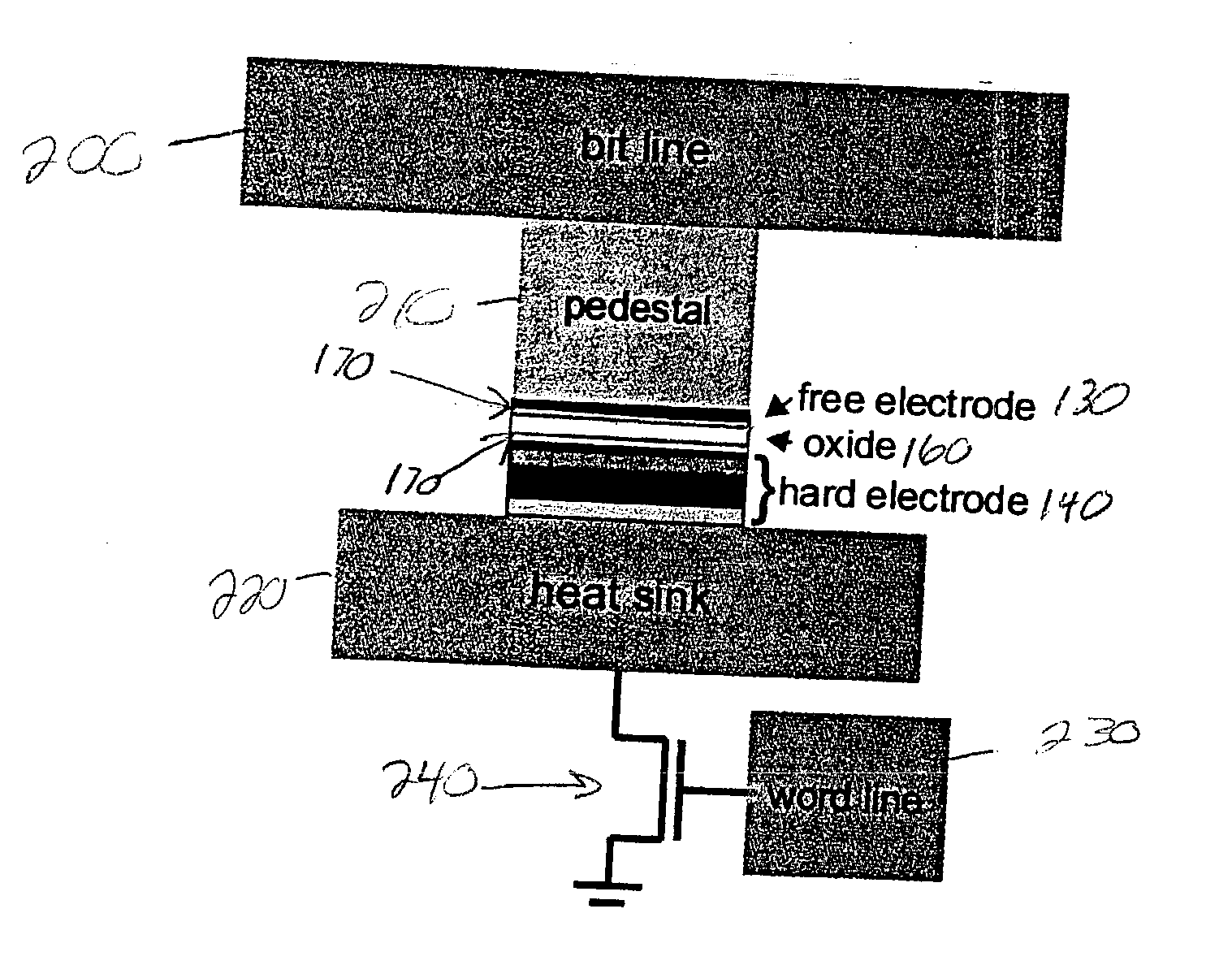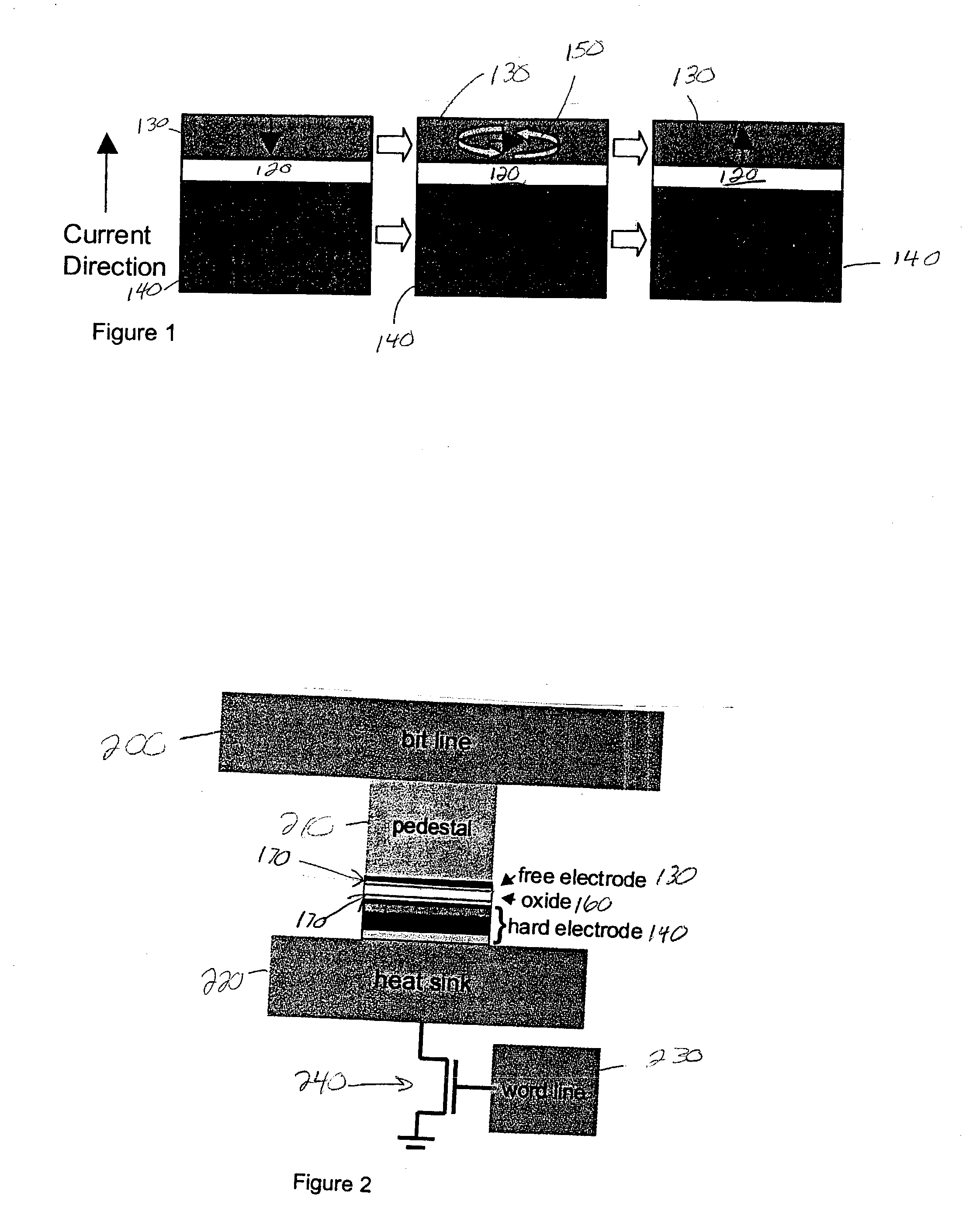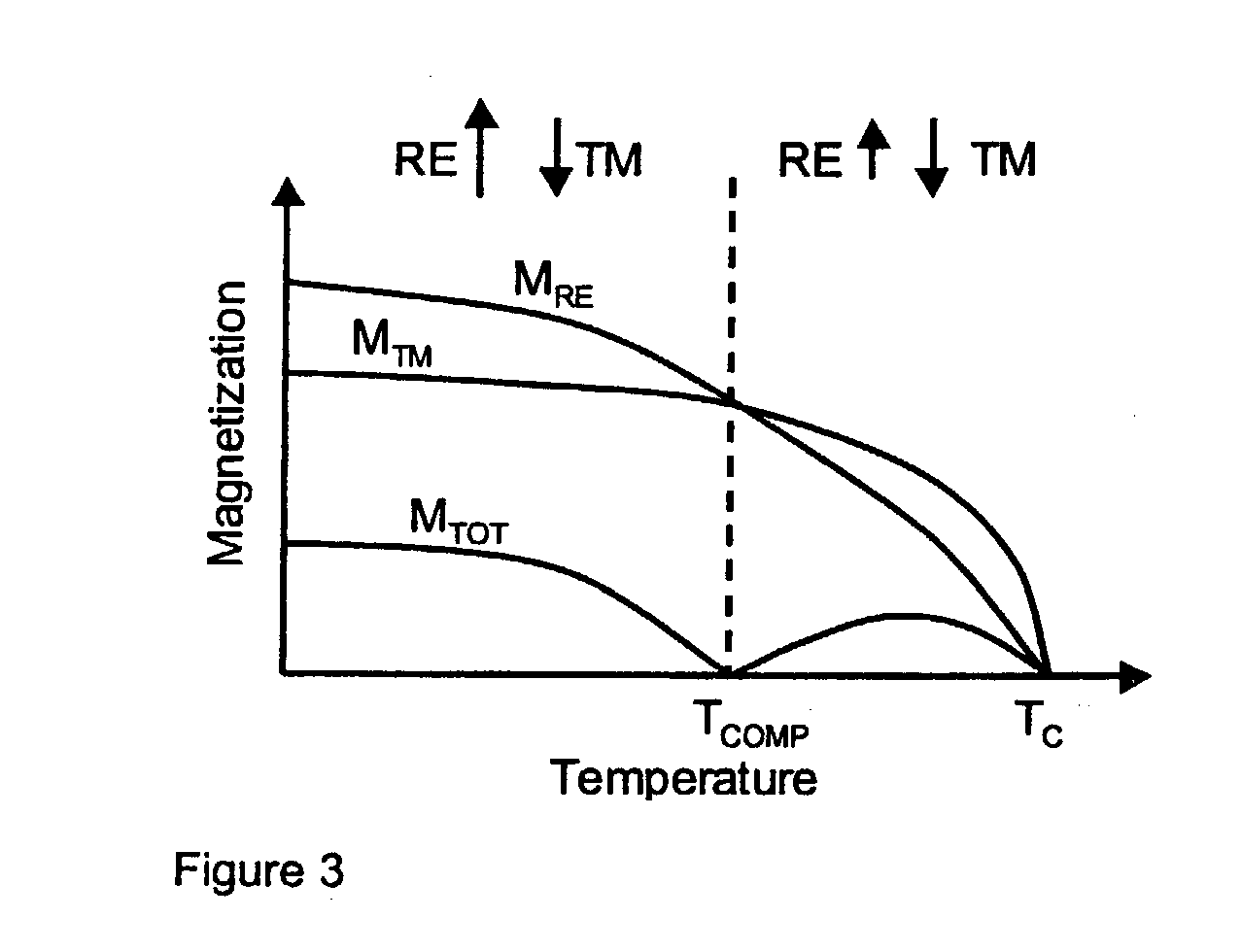Thermally-assisted magnetic writing using an oxide layer and current-induced heating
a technology of magnetic writing and oxide layer, which is applied in the field of current-induced heating in magnetic random access memory devices, can solve the problems of limited scalability beyond the 65 nm technology node, unsuitable replacement for volatile memories such as dram or sram, and very slow flash speed
- Summary
- Abstract
- Description
- Claims
- Application Information
AI Technical Summary
Benefits of technology
Problems solved by technology
Method used
Image
Examples
Embodiment Construction
[0012] With the invention, thermally-assisted magnetic writing is accomplished by passing current through an ultra-low resistance oxide layer adjacent or near to a free electrode to be switched. Current-induced heating lowers the anisotropy of the free electrode and reduces the current density required for field or spin-transfer-based writing. In one embodiment of the invention, the resistance through the oxide layer in on the order 4 .OMEGA.-.mu.m.sup.2, the free electrode is comprising of Tb.sub.xFe.sub.y based alloy, and switching is induced by spin-transfer torque with thermal assist. Thus, the invention provides a non-volatile MRAM memory device with a large number of read and write cycles, current-controlled switching, excellent scalability, ultra-fast switching speeds, very small bit cell, low voltage, low power, and optimal resistance for CMOS integration.
[0013] As mentioned above, the non-volatile memory chip market is today dominated by Flash technology. Unfortunately, Fla...
PUM
| Property | Measurement | Unit |
|---|---|---|
| melting temperature | aaaaa | aaaaa |
| resistance | aaaaa | aaaaa |
| resistance | aaaaa | aaaaa |
Abstract
Description
Claims
Application Information
 Login to View More
Login to View More - R&D
- Intellectual Property
- Life Sciences
- Materials
- Tech Scout
- Unparalleled Data Quality
- Higher Quality Content
- 60% Fewer Hallucinations
Browse by: Latest US Patents, China's latest patents, Technical Efficacy Thesaurus, Application Domain, Technology Topic, Popular Technical Reports.
© 2025 PatSnap. All rights reserved.Legal|Privacy policy|Modern Slavery Act Transparency Statement|Sitemap|About US| Contact US: help@patsnap.com



